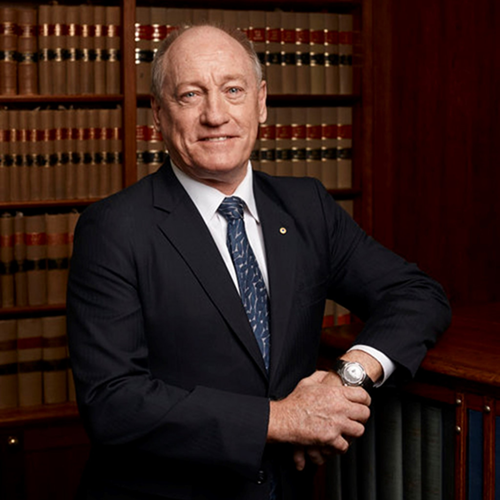- Autumn 2023
- New prohibition against hostile workplace environments and a positive duty
New prohibition against hostile workplace environments and a positive duty




Introduction
On 13 December 2022, key provisions in the Anti-Discrimination and Human Rights Legislation Amendment (Respect at Work) Act 2022 (Cth) (the Amendment Act) introduced significant new changes inter alia into the Sex Discrimination Act 1984 (Cth) (the SD Act)1 which had immediate impact on the New South Wales Bar.
The amendments make it unlawful for a person to subject another person to a workplace environment hostile on the ground of sex (section 28M), and introduce a positive duty on all employers and persons conducting a business or undertaking (PCBU) to ‘take reasonable and proportionate measures to eliminate, as far as possible,’ sex discrimination, sexual and sex-based harassment, victimisation and hostile workplace environments (Part IIA).
The changes impact the New South Wales Bar in several ways. First, barristers are caught by the prohibition under section 28M in respect of each other, given that section applies to all ‘persons’ rather than being limited to the common law notion of ‘employer’ and ‘employee’. Further, barristers and barristers’ chambers may fall within the broad definition of ‘PCBU’, thereby being subject to the strong positive duty under Part IIA. Finally, the amendments were largely or wholly absorbed on 13 December 2022 into Rule 1232 of the Legal Profession Uniform Conduct (Barristers) Rules 2015 (the Barristers’ Rules) by reason of the broad definition of ‘discrimination’ in Rule 125.
New prohibition against hostile workplace environments
Section 28M(2) of the SD Act provides that a person subjects another person to a workplace environment that is hostile on the ground of sex if:
a. the first person engages in conduct in a workplace where the first person or the second person, or both, work; and
b. the second person is in the workplace at the same time as or after the conduct occurs; and
c. a reasonable person, having regard to all the circumstances, would have anticipated the possibility of the conduct resulting in the workplace environment being offensive, intimidating or humiliating to a person of the sex of the second person by reason of the sex of the person, a characteristic that appertains generally to persons of the sex of the person or a characteristic that is generally imputed to persons of the sex of the person.
The sex or characteristic appertaining to the sex of the person need not be the dominant or substantial reason for the conduct and need only be a reason: section 8A.
Section 4 of the SD Act defines ‘workplace’ as having the meaning within the Work Health and Safety Act 2011 (Cth) (the WHS Act), section 8 of which defines a workplace as ‘a place where work is carried out for a business or undertaking and includes any place where a worker goes, or is likely to be, while at work.’ Given the breadth of this definition, for a barrister, court and dispute resolution rooms and facilities, any barristers’ chambers (including of other barristers), solicitors’ offices, client premises as well as jails could fall within the definition, if those are places a barrister ‘goes, or is likely to be, while at work.’

The use of the ‘reasonable person test’ and established concepts such as ‘offensive, intimidating or humiliating’ is said to enable application of existing principles in interpreting section 28M (Revised EM, [10]). Such authorities include those considered for instance in Vitality Works Australia Pty Ltd v Yelda (No 2) (2021) 307 IR 443. In Yelda (No 2), Bell P (as his Honour then was) and Payne JA at [102], with McCallum JA (as her Honour then was) agreeing at [125], cited O’Callaghan v Loder (1983) 3 NSWLR 89, in which Mathews DCJ (as her Honour then was) at 103 made it apparent that even a ‘single act of sexual aggression’ can create such a ‘tainted’ environment.
Under section 28M(3), the circumstances to be considered in respect of section 28M(2) include the seriousness of the conduct, whether the conduct was continuous or repetitive, the role, influence or authority of the person engaging in the conduct, and any other relevant circumstance. The ‘inclusion of these factors’ is said to provide ‘appropriate limits on the scope of conduct captured’ (Revised EM, [9]).
New positive duty
Barristers or barristers’ chambers falling within the meaning of ‘employer’3 or ‘PCBU’ in section 4 of the SD Act are subject to the positive duty under section 47C(1) of the SD Act to take ‘reasonable and proportionate measures’ to ‘eliminate, so far as possible’, the conduct described below.
The conduct in section 47C(2) that the ‘duty holder’ must take ‘reasonable and proportionate measures’ to ‘eliminate, so far as possible’ is generally:
a. All forms of sex discrimination unlawful under sections 14(1), (2)-17 of the SD Act (which prohibits sex discrimination in the area of employment, and in respect of contractors, commission agents and certain partnerships and extends to discrimination on the ground of sexual orientation, gender identity, intersex status, marital or relationship status, pregnancy or potential pregnancy, breastfeeding or family responsibilities);
b. Sexual and sex-based harassment unlawful under section 28B of the SD Act;
c. Subjecting a person to a workplace environment hostile on the basis of sex unlawful under section 28M of the SD Act; and
d. Victimisation within the meaning of section 47A of the SD Act where the victimisation relates to making of complaints, proceedings, assertions or allegations in relation to unlawful sex discrimination, sexual or sex-based harassment or subjecting a person to a hostile workplace environment.
Under section 47C(3), the ‘duty holder’ has the positive duty in respect of the conduct in section 47C(2) generally where that conduct is engaged in by the duty holder themselves, or by the duty holder’s employees, workers4 (if the duty holder is a PCBU) and/or agents. Under section 47C(4) and (5), generally the duty holder has an obligation in respect of conduct against the duty holder’s employees and/or workers by any person in respect of the conduct immediately above (other than in respect of all forms of unlawful discrimination prohibited by sections 14(1), (2)-17 of the SD Act).
The words ‘by any person’ are intended to ‘make it clear’ that the positive duty extends to ‘conduct engaged in by a broader range of people, including third parties, such as customers and suppliers, who are not necessarily employed by the relevant employer or working in the relevant PCBU’s workplace’ (Supplementary EM, [1], Notes on amendments, Amendment 1, p6).
For barristers, such an obligation has the potential to capture the conduct of barristers with whom a barrister works, or against whom a barrister is opposed, each of whom could individually be duty holders. The obligation could extend as well to instructing (and/or opposing) solicitors. The positive duty under section 47C(1) is similarly worded to section 15(2) of the Equal Opportunity Act 2010 (Vic) and not dissimilar to that under section 19 of the WHS Act, and may be similarly interpreted. In Kumari v Bervar Pty Ltd (Human Rights) [2023] VCAT 21, the Tribunal observed at [41] in relation to the duty: …It is a serious obligation, and … Victorian employees have a legitimate expectation that they will be treated fairly when they make a complaint about contravention of the EO Act. An employer who is not alive to that expectation, and its obligations under the EO Act, is at risk of injuring their employees if their conduct contravenes the Act.
The meaning of ‘reasonable and proportionate measures’ will vary between employers and PCBUs subject to their particular circumstances: Revised EM [14]. The term ‘all reasonable steps’ has been extensively considered in determining vicarious liability under section 106(2) of the SD Act, including in Von Schoeler v Allen Taylor (No 2) [2020] FCAFC 13 at [64] (per the Court) and Richardson v Orica (2013) 232 IR 31 at [163] (per Buchanan J), in which it was emphasised that taking ‘all reasonable steps’ included inter alia the clear communication in workplace policies, periodically reinforced, of relevant legal standards.
For the purposes of the New South Wales Bar, the Bar Association’s model Best Practice Guidelines5 are produced to assist with such compliance, the adoption of which is strongly encouraged. Under section 47C(6), in considering whether a duty holder has complied with the duty, matters including the size, nature, and resources of the duty holder’s business or undertaking, as well as the practicability and cost of eliminating the conduct, will be taken into account.
While conduct caught by Part IIA does not fall within the definition of ‘unlawful discrimination’ in section 3 of the Australian Human Rights Commission Act 1986 (Cth) (the AHRC Act), the Australian Human Rights Commission (the Commission) is newly empowered, in relation to the positive duty, to publish guidelines for compliance, promote understanding and acceptance and undertake educational programs in relation to it: Div 4A of Part II of the AHRC Act. Further compliance powers will be conferred on the Commission on and from 12 December 2023: section 2(1), item 5 of the Amendment Act; Revised EM [23].
Meaning of PCBU
Section 4 of the SD Act provides that a PCBU has the same meaning as that under section 5 of the WHS Act, which provides that a person conducts a business or undertaking:
a. whether the person conducts the business or undertaking alone or with others; and
b. whether or not the business or undertaking is conducted for profit or gain.
A person does not conduct a business or undertaking to the extent that the person is engaged solely as a worker in, or as an officer of, that business or undertaking (WHS Act, s 5(4)). Further exclusions to the definition of PCBU are contained in regulation 7 of the Workplace Health and Safety Regulations 2017 (NSW).
Systemic discrimination
The Amendment Act in addition provides the Commission with new powers to inquire into any matter that may relate to ‘systemic unlawful discrimination’ or ‘suspected systemic unlawful discrimination’: Div 4B of Part II of the AHRC Act. ‘Systemic unlawful discrimination’ is defined in section 35L(2) of the AHRC Act as meaning ‘unlawful discrimination’ (as defined in section 3 of the AHRC Act, which includes the prohibitions in Part II of the SD Act against sex discrimination, sexual and sex-based harassment, victimisation and hostile workplace environments) that affects a class or group of persons and is continuous, repetitive or forms a pattern.
The Commission’s systemic inquiry function is said to complement the positive duty compliance function to assist in identifying systemic issues in an organisation’s or industry’s culture, governance and systems: Revised EM [228]. The new inquiry function is capable of impacting on barristers and barristers’ chambers in respect of those legislative provisions caught by the definition of ‘unlawful discrimination’ conferring obligations on ‘persons’ and PCBUs.
Amendments to other legislation
The Amendment Act amends the Age Discrimination Act 2004 (Cth) (the AD Act), Disability Discrimination Act 1992 (Cth) (the DD Act) and the Racial Discrimination Act 1975 (Cth) (the RD Act) to make victimisation (meaning subjecting a person to a detriment for inter alia making or proposing to make a complaint under the legislation) capable of forming the basis of a civil action in addition to a criminal complaint: sections 47A and 51 of the AD Act; sections 42 and 58A of the DD Act; and sections 18AA and 27(2) of the RD Act. Similar changes were made to sections 47A and 94 of the SD Act in respect of victimisation pursuant to the Sex Discrimination and Fair Work (Respect at Work) Amendment Act 2021 (Cth).
Absorption into the Barristers’ Rules
Conduct falling within the definition of ‘unlawful discrimination’ within the meaning of section 3 of the AHRC Act is caught by Barristers’ Rule 123 by reason of the broad definition of discrimination in Rule 125 of the Barristers’ Rules, which provides:
'discrimination as defined under the applicable state, territory or federal antidiscrimination or human rights legislation and includes all forms of unlawful discrimination.’
Federally, the AHRC Act provides the legislative mechanism by which complaints are made under the SD Act (as well as under the RD Act, DD Act and AD Act) by way of the overarching definition of ‘unlawful discrimination,’ which is broad and incorporates inter alia ‘any acts, omissions or practices’ proscribed by the operative provisions of the federal antidiscrimination legislation.
Section 28M of the SD Act, as well as all other provisions of Part II of the SD Act, fall within the definition of ‘unlawful discrimination’ under section 3 of the AHRC Act and therefore within the definition of ‘discrimination’ under Barristers’ Rule 125.
Conduct constituting a breach of section 28M of the SD Act, namely subjecting a person to a workplace environment hostile on the ground of sex, is thereby also prima facie capable of constituting a breach of Barristers’ Rule 123(a). Similarly, ‘systemic unlawful discrimination’ within the meaning of section 35L(2) of the AHRC Act may be capable of constituting a breach of Barristers’ Rule 123(a).
The situation is less clear in respect of the positive duty under Part IIA of the SD Act, which does not constitute ‘unlawful discrimination’ within the meaning of section 3 of the AHRC Act.
Section 47B of the SD Act provides instead that division 4A of Part II of the AHRC Act confers functions in respect of the positive duty, although further compliance powers will commence on 12 December 2023.
The term ‘discrimination’ (as opposed to ‘unlawful discrimination’) is separately defined in section 3 of the AHRC Act to include ‘any distinction, exclusion or preference made on the basis of race, colour, sex, religion, political opinion, national extraction or social origin that has the effect of nullifying or impairing equality of opportunity or treatment in employment or occupation’. This is sufficiently broad so as to prima facie capture the positive duty under Part IIA, thereby bringing it within the meaning of ‘discrimination’ in Barristers’ Rule 125 and the prohibition in Barristers’ Rule 123(a).
Interaction between the legislation and the Barristers Rules
There is no impediment to any person making a complaint against a barrister for an alleged breach of Barristers’ Rule 123 simultaneously with commencing proceedings against that barrister alleging a breach of anti-discrimination legislation. The same or similar impugned conduct substantiated against a barrister(s) could give rise to a disciplinary finding simultaneously with court-awarded damages. Interaction with the amendments under the Respect at Work Act 2021 The legislative changes introduced under the Amendment Act operate in conjunction with the similarly significant amendments introduced in September 2021 pursuant to the Sex Discrimination and Fair Work (Respect at Work) Amendment Act 2021 (Cth). These were the subject of an earlier article.6
Conclusion
These important changes have potentially far-reaching implications for barristers’ chambers and individual barristers. Advice or guidance may need to be sought, including from Senior Counsel, on appropriate measures and, as a first step, adoption of the Bar Association’s model Best Practice Guidelines is strongly encouraged. The Bar Association conducts CPDs on the Best Practice Guidelines and the assistance these can provide. BN
Rule 123 (incorporating amendments as at 4 March 2022): Anti-discrimination and harassment
1. A barrister must not in the course of, or in connection with, legal practice or their profession, engage in conduct which constitutes:
(a) discrimination,
(b) sexual harassment, or
(c) bullying.
2. For the purposes of subrule (1), conduct in connection with a barrister’s profession includes, but is not limited to:
(a) conduct at social functions connected with the bar or the legal profession, and
(b) interactions with a person with whom the barrister has, or has had, a professional relationship.
ENDNOTES
1 It in addition amended the Australian Human Rights Commission Act 1986 (Cth), Workplace Gender Equality Act 2012 (Cth), Disability Discrimination Act 1992 (Cth), Racial Discrimination Act 1975 (Cth) and Age Discrimination Act 2004 (Cth), with consequential amendments to the Federal Circuit and Family Court of Australia Act 2021 (Cth), Federal Court of Australia Act 1976 (Cth) and Inspector-General of Intelligence and Security Act 1986 (Cth).
2 The text of which is set out in full at the conclusion of this article.
3 The term ‘employer’ is not defined, however the term ‘employment’ is defined in section 4 of the SD Act to ‘include part-time and temporary employment, work under a contract for services, work as a Commonwealth employee and work as a State employee of a State’, Note 1 to the definition providing that ‘employer’ has a corresponding meaning. While the term ‘employment’ under federal anti-discrimination legislation has resulted in the common law meaning of ‘employer’ and ‘employee’ being adopted (see for instance Zoltaszek v Downer EDI Engineering Pty Ltd [2011] FCA 744, in which the applicant was found to be a ‘contractor’ rather than an ‘employee’ but in which his discrimination claim as a contractor was also rejected at [50]-[54] (special leave refused)), section 4 of the SD Act extends ‘employment’ to include contractors and ‘temporary’ employment.
4 The term ‘worker’ of a PCBU was considered for instance in Bibawi v Stepping Stone Clubhouse Inc (2019) 285 IR 190 at [18]: ‘The definition of 'worker' in s 7(1) of the WHS Act is very broad, in that a person need only perform work 'in any capacity for' the other person conducting the business or undertaking in order to satisfy the definition. The definition was expressly described as 'broad' in the Explanatory Memorandum to the Fair Work Bill 2013 which added Pt 6-4B to the FW Act’; Respect@work Report, p467.
5 Available on the Bar Association’s webpage at: https://nswbar.asn.au/bar-standards/best-practice-guidelines.
6 Thew and Hogan-Doran SC 'New Accessorial Liability for Barristers Under the Sex Discrimination Act 1984 (Cth) and Fresh Obligations Under Bar Rule 123' [2022] NSWBarAssocNews 62; (2022 Winter) Bar News (http://www5.austlii.edu.au/au/journals/NSWBarAssocNews/2022/62.ht
